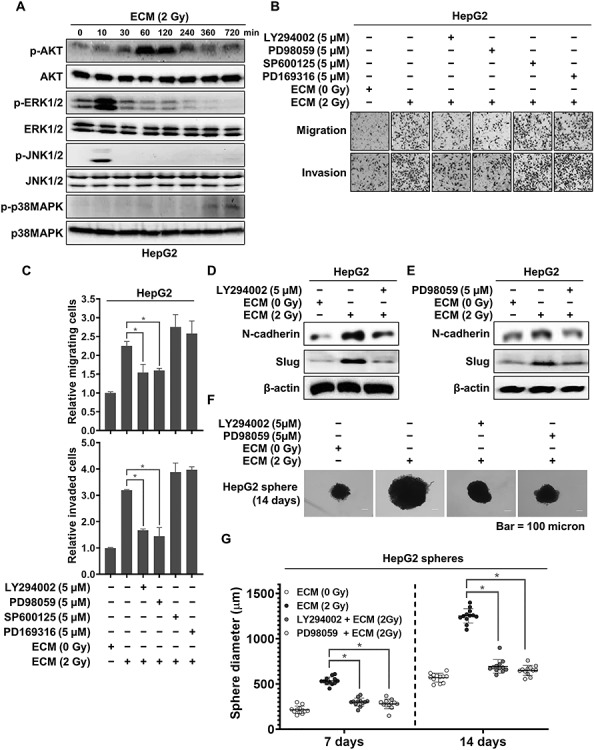Fig. 3.

Activation of AKT and ERK induced by 2 Gy–irradiated ECM. (a) Western blot analysis of the phosphorylation of AKT and MAPKs in HepG2 cells treated with 2 Gy–irradiated ECM. (b and c) Effects of LY294002, PD98059, SP600125 and PD169316 on the migratory and invasive properties of HepG2 cells treated with 2 Gy–irradiated ECM. Cells were grown in the presence or absence of each inhibitor for 48 h, and migration and invasion assays were performed using Transwell chambers. (d and e) Effects of LY294002 and PD98059 on the protein expression levels of N-cadherin and Slug. HepG2 cells treated with 2 Gy–irradiated ECM were grown in the presence or absence of LY294002 (5 μM) or PD98059 (5 μM) for 48 h, and western blot analysis was performed. (f and g) Effects of LY294002 and PD98059 on the sphere-forming ability of HepG2 cells enhanced by treatment with 2 Gy–irradiated ECM. Cells (300 cells per well) were grown in DMEM/F12 supplemented with B27, N2, EGF and bFGF in 24-well ultralow attachment plates for 7 and 14 days, and the size of the spheres was determined. The size of 12 randomly selected spheres per group (n = 12/group) was measured. The average size of each sphere was quantified with the standard deviation and is shown in the representative graph. β-actin was used as the loading control. Western blotting was performed in triplicate, and the data shown are representative of a typical experiment. The results from three independent experiments are expressed as the means ±1 SEM. (*P < 0.05).
